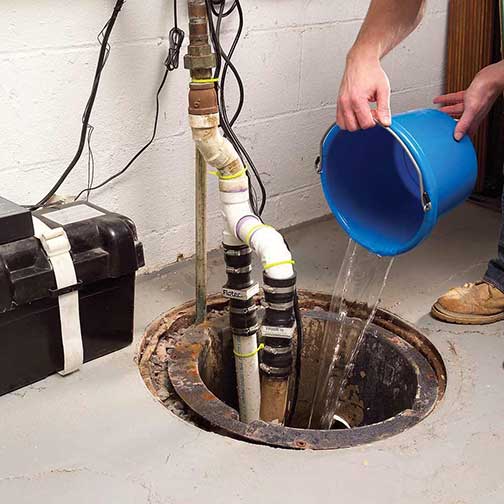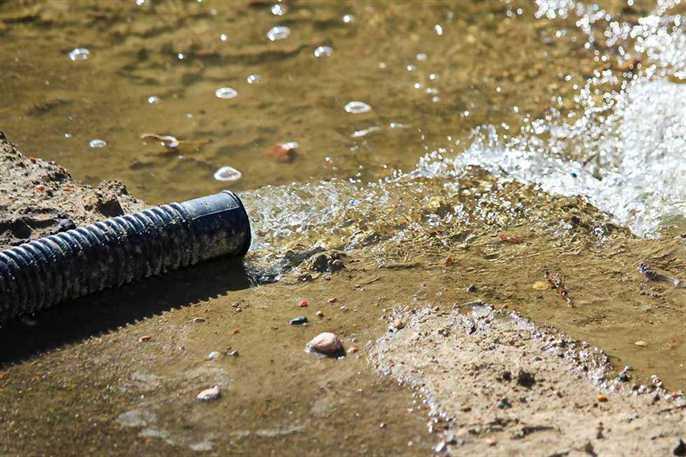Helpful Tips for Maintaining a Sump Pump
Helpful Tips for Maintaining a Sump Pump
Blog Article
How do you really feel in regards to How to Care for Your Sump Pump?

Sump pumps are crucial elements in several homes, especially in areas prone to flooding or extreme moisture. They aid prevent water damages by efficiently getting rid of excess water from cellars or crawl spaces. Nonetheless, like any other appliance, sump pumps require regular maintenance to ensure they work properly when needed one of the most. Cleansing your sump pump is an essential part of its upkeep, and comprehending just how to do it properly can conserve you from pricey fixings and prospective disasters.
Intro
Preserving a tidy sump pump is important for its correct functioning and longevity. Disregarding this vital task can bring about blockages, breakdowns, and eventually, water damages to your home. As a result, finding out just how to clean a sump pump is essential for house owners that depend on these tools to keep their cellars dry and secured.
Comprehending the Sump Pump
Before diving right into the cleansing procedure, it's essential to have a basic understanding of how a sump pump functions. Usually set up in a pit or container below the basement floor, a sump pump consists of numerous essential parts, including a pump, a float switch, and a discharge pipe. When water accumulates in the pit, the float button activates the pump, which then pumps the water out through the discharge pipeline, far from the building's foundation.
Indicators of a Dirty Sump Pump
Knowing when your sump pump requires cleaning is crucial for protecting against potential breakdowns. Some usual indicators that show a filthy sump pump include unusual noises throughout operation, minimized water flow, and noticeable particles in the pit. If you see any of these signs, it's vital to clean your sump pump promptly to prevent any kind of additional issues.
Getting ready for Cleansing
Prior to you start cleansing your sump pump, it's important to take some safety precautions. Begin by shutting down the power to the pump to stay clear of any kind of electric crashes. Furthermore, put on proper safety equipment, such as handwear covers and goggles, to secure yourself from dirt, debris, and possible virus.
Step-by-step Guide to Cleansing a Sump Pump
Shutting Off the Power
Begin by disconnecting the power supply to the sump pump to prevent any accidents while cleansing.
Getting Rid Of Debris and Dust
Utilize a pail or a scoop to get rid of any visible debris, dirt, or debris from the sump pit. Dispose of the debris properly to stop it from blocking the pump or the discharge pipeline.
Cleansing the Pump and Drift Switch
When the pit is free from debris, very carefully get rid of the pump from the pit. Check the pump and the float switch for any indicators of damages or wear. Use a soft brush or cloth to cleanse the surfaces and eliminate any collected crud.
Flushing the System
After cleansing the pump and float button, purge the sump pit with clean water to remove any staying dirt or sediment. This will certainly aid make certain that the pump runs smoothly and efficiently.
Looking For Appropriate Functioning
Before re-installing the pump, perform a quick examination to make certain that the float button triggers the pump properly. Pour some water into the sump pit and observe the pump's procedure. If every little thing is operating properly, you can reconstruct the pump and reconnect the power supply.
Maintenance Tips to Maintain Your Sump Pump Clean
In addition to routine cleansing, there are numerous maintenance suggestions you can follow to maintain your sump pump in optimal condition:
Conclusion
Cleansing your sump pump is an essential element of its upkeep and guarantees that it operates properly when you require it one of the most. By adhering to the steps described in this guide and incorporating routine upkeep right into your routine, you can expand the life expectancy of your sump pump and shield your home from water damage.
6 STEPS ON HOW TO CLEAN A SUMP PUMP PROPERLY
UNDERSTANDING SUMP PUMPS
Your sump pump plays a crucial role in protecting your home by managing and removing excess water. It primarily functions as a “shield”, guarding your basement against the damaging effects of water accumulation. The pump is housed in a sump pit in the lowest part of your basement, and its job is to pump out any water that collects there.
During heavy rainfalls or when snow melts rapidly, water can infiltrate your basement, posing potential risks like flooding, structural damage, and harmful mold growth. Here, the sump pump springs into action, pumping out the intruding water and directing it away from your home.
SAFETY FIRST
Before cleaning, remember to prioritize safety. Disconnect the sump pump from the power source to prevent any accidental electric shocks. Also, wear sturdy gloves to protect your hands from any sharp or dirty components within the pump.
REMOVE THE SUMP PUMP
After ensuring your safety, the next step is to remove the sump pump from its pit. Doing this might require careful maneuvering as you don’t want to damage any pump components. Once removed, clean the sump pit to remove any accumulated debris or sludge.
INSPECT THE PUMP
Inspect the pump for any visible signs of wear or damage. Check the power cord, float switch, and impeller housing. If any components look worn out or damaged, consider replacing them to ensure optimal performance.
CLEAN THE PUMP
Thoroughly clean the pump with warm, soapy water. Make sure to rid it of any dirt, gravel, or other debris that might impede its performance. You can use a toothbrush to clean the small, hard-to-reach parts of the pump.
REINSTALL THE SUMP PUMP
Reinstall the pump into the sump pit Make sure it’s positioned correctly to remove the water effectively Once it’s back in place, reconnect it to the power source TEST THE PUMP
Finally, pour some water into the pit to ensure the pump works correctly. It should start automatically and begin pumping out the water; if it doesn’t, check the power source and the positioning of the pump.
Remember, while cleaning your sump pump is an essential part of home maintenance, hiring a professional plumber for a thorough inspection and cleaning at least once a year is also important. This will ensure that your pump is in optimal condition, ready to protect your home from potential water damage.
BEST PRACTICES FOR CLEANING SUMP PUMP DISCHARGE PIPES
Regular Inspection: Regularly inspect your discharge pipes, especially during heavy rainfall or snowmelt periods. Look for any signs of blockage or damage. Early detection of problems can prevent serious issues down the line. Periodic Cleaning: Over time, sediment and debris can accumulate in the discharge pipes, impeding the flow of water. Regular cleaning helps keep the pipes clear and functioning efficiently. You can use a high-pressure water jet to effectively clean the pipes. Insulation During Winter: In colder climates, discharge pipes can freeze, blocking the outflow of water. Protect your discharge pipes from freezing temperatures by insulating them with foam pipe insulation. This will ensure the sump pump can continue to discharge water even in freezing conditions. Proper Positioning: The discharge pipe should be positioned to direct water away from your home’s foundation. Improper positioning can lead to water seeping back into the basement. Ensure the pipe is long enough and angled correctly. Installation of a Check Valve: A check valve prevents water from flowing back into your sump pit after the pump has pushed it out. Installing a check valve helps maintain the efficiency of your sump pump and reduces the risk of flooding. Minimize Pipe Turns: Every curve or turn in the discharge pipe can decrease the efficiency of water flow. By minimizing turns and bends in your discharge pipe, you can increase the efficiency of your sump pump. https://www.fullspeedplumbing.com/how-to-clean-a-sump-pump-properly9999/

Do you appreciate reading about Keep Your Sump Pump Clean, It'll Keep You Dry? Create a review below. We would be pleased to find out your ideas about this blog post. Hoping that you visit us again soon. Loved our post? Please quickly share it. Help others locate it. We cherish your readership.
Get Estimate Report this page